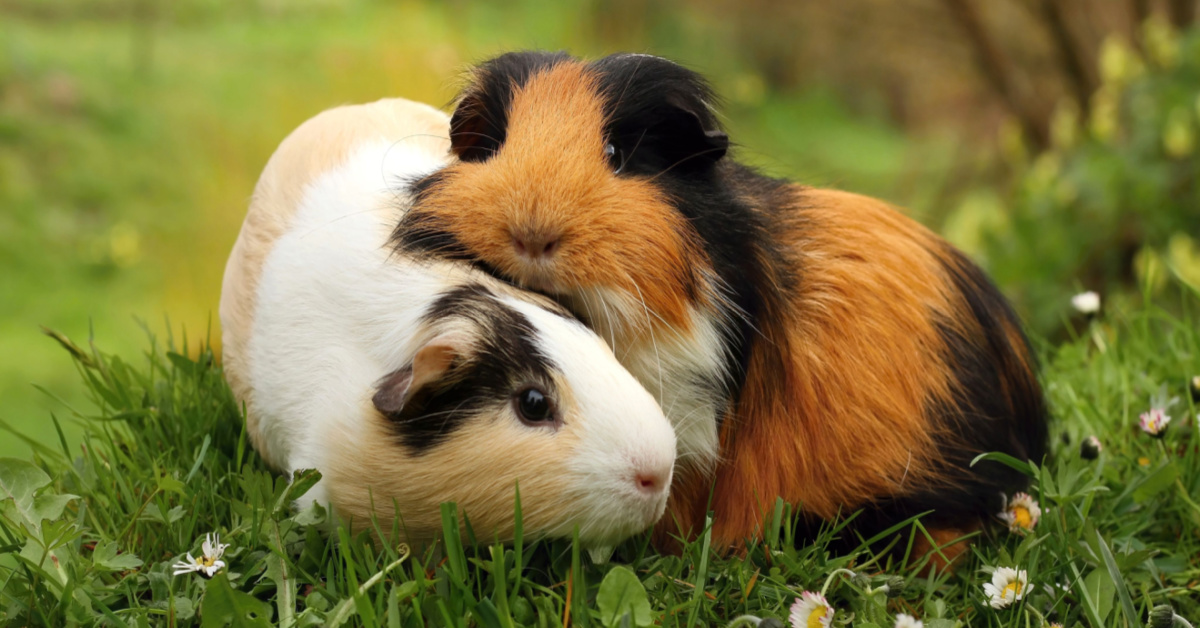
Are you interested in Guinea Pigs? Are you thinking about becoming a Guinea Pig Owner? Here’s a little background information to decide whether the Guinea pig is the right pet for you.
What are Guinea Pigs, and where are they from?
Also known as Cavies, Guinea Pigs are a domesticated rodent species (Cavia porcellus). Guinea Pigs originate from South America. Believed to be domesticated as far as 5000 BC, they have a long history of being kept as pets and bred for food.
It appears that the Peruvians are responsible for the array of breeds of Guinea Pigs that we see today. The Peruvians selectively bred the Guinea Pigs to alter the taste of their flesh as well as alter their appearances.
When did Guinea Pigs come to Europe?
It appears that the Guinea Pig became popular with the higher classes in the 16th century around the Elizabethan era. The common name of this pet also appears to be the origin of the journey into Europe referencing their price in England as one Guinea.
But where did the reference to pig come from? Some people believe it’s because they resemble small pigs, and this seems to be borne out by the names guinea pigs are given in other languages. In Portuguese, for example, they are called ‘Porchitas da India’ (‘little pigs from India’), and in Latin, they are called C. Porcellus (Latin for ‘small pig’). Their German name, “Meerschweinchen”, may also be due to the pig-like squeaks they make.
Fact Sheet and quick pointers
- Most Active in Dusk and Dawn
- Herbivores
- Herd Animals
- Constant Grazers
- Seven to Ten Years Life Expectancy
- One Hour Per Day Required Care
- Timid
The Right Setup
Guinea Pigs love to roam about so the first essential point to make about their housing is space. They need to have plenty of it a good rule of thumb is at least 8m² for every two to three Guinea Pigs you own. They are Herd animals and are very sociable so having more than one is a must.
You can keep Guinea Pigs outside or inside and both require thought to make sure they are not too hot or too cold and are safe from predators, other pets and children.
For inside keeping here are some great cages for easy custom setups
Shelters for Guinea Pigs
Guinea Pigs need shelter so plenty of hides and a sheltered area are a must. Because of their timid nature Guinea Pigs love to hide in shelter, this is a must for them to relax generally as well as sleep. It is a great idea to have multiple Shelters as like most Herd animals they can bicker at each other and may need a little time away from each other.
Below are some great examples of some hides that are good for Guinea Pigs.
Toys
Generally speaking, as long as the Guinea pigs have plenty of areas to explore then they don’t need much else than company food and water to keep themselves entertained. However, like other rodents, their mouths are filled with plenty of teeth that continually grow so having something to gnaw it would be very welcomed.
It is also very important to note that Guinea Pigs have fairly fragile backs so when looking for something entertaining for them wheels, balls and high rise shelters are best to avoid to keep them out of harm’s way.
Food for Guinea Pigs
Guinea Pigs have quite a complex diet compared to other rodents. They need a constant source of Timothy hay and pellets. After that, they need a good handful of a mix of vegetables herbs and greens. Every so often they can have fruit for a treat.
The PDSA have a great reference for what foods are safe for Guinea Pigs they note the list of foods below;
Safe vegetables
- Artichoke leaves
- Baby corn on cob
- Bell Peppers – high in vitamin C
- Beetroot
- Carrot tops
- Cauliflower leaves and stalks
- Celery leaves
- Chicory
- Collard greens
- Courgette (and flowers)
- Green beans
- Lettuce – Butterhead, Red leaf, Cos, Little Gem (not iceburg)
- Parsnips
- Pak Choi/Bok Choi
- Peas – leaves and pods
- Rocket
- Savoy cabbage
- Spring greens – high in vitamin C
- Swiss chard
- Tomato (not leaves/vine, as poisonous) – high in vitamin C
- Watercress
Safe herbs
- Basil
- Coriander
- Dill
- Mint
- Oregano
- Rosemary
- Sage
- Thyme
Safe veg to be fed in moderation
- Asparagus ) – high in vitamin C
- Broccoli (too much can cause gas) – high in vitamin C
- Brussel Sprouts (too much can cause gas)
- Cabbage (dark green varieties)
- Cucumber (too much can cause diarrhoea)
- Kale – high in vitamin C
- Parsley – high in vitamin C
- Red cabbage
- Romaine lettuce
- Spinach – high in vitamin C
Treats
- Apple (not the pips because they’re poisonous)
- Banana
- Blueberry
- Carrot
- Cherry
- Kiwi
- Melon
- Pear
- Plum
- Squash
- Strawberry
Generally, you need their diet to complete three tasks
- Keep a healthy gut
- Help keep their teeth short
- Add vitamin C to their diet to avoid Scurvy.
If you like this post you may also like to view our dog directory here
Or you can also find local Pet shops in our Business directory click here to view all pet shops
References
https://www.livescience.com/50658-guinea-pig-facts.html
https://www.four-paws.org/our-stories/publications-guides/guinea-pigs-their-history#
https://www.four-paws.org/our-stories/publications-guides/guinea-pigs-as-pets
https://www.pdsa.org.uk/pet-help-and-advice/looking-after-your-pet/small-pets/your-guinea-pig-s-diet